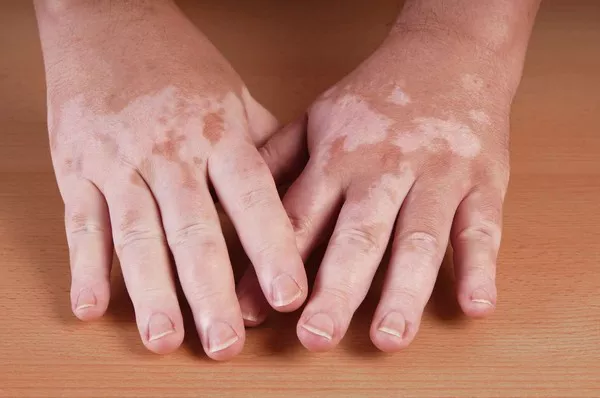Have you ever heard of a genetic skin disorder that leads to dry, thickened, and flaky skin? This condition, known as ichthyosis, is derived from the Greek word for fish and manifests with scales on the skin that can range from mild aesthetic concerns to severe, life-threatening complications. Dr. Atula Gupta, a dermatologist, dermatosurgeon, and pediatric dermatologist with an MD in dermatology, venereology, and leprosy, provided insights into ichthyosis, its various types, and management strategies.
What is Ichthyosis?
“Ichthyoses are a group of genetic skin disorders resulting from abnormal skin turnover. The appearance of different ichthyotic conditions can vary significantly. Common symptoms include dry, scaly skin, redness, itching, fissures, thickened palms and soles, and difficulty in maintaining body temperature,” explained Dr. Gupta.
According to the National Institute of Arthritis and Musculoskeletal and Skin Diseases (NIAMS), many individuals have a genetic form of ichthyosis caused by a mutated gene inherited from their parents. However, some develop an acquired form of ichthyosis due to other medical conditions or certain medications. While there is currently no cure, ongoing research and available treatments can help manage the symptoms.
Major Types of Ichthyosis
Ichthyosis Vulgaris
“Ichthyosis vulgaris is the most common type, linked to mutations in the filaggrin gene. It affects about 1 in 250 people, with symptoms typically appearing in childhood. These include fine white scales on the forearms or legs,” noted Dr. Gupta.
X-linked Ichthyosis
X-linked ichthyosis exclusively affects males due to its X-linked recessive pattern. It affects approximately 1 in 6,000 individuals because of mutations in the STS gene, leading to a steroid sulfatase deficiency. “The scales associated with this condition are larger, dark brown, and typically found on the neck, limbs, and trunk. This condition may also be associated with corneal opacities. Symptoms can be evident at birth or during infancy,” added Dr. Gupta.
Lamellar Ichthyosis
Lamellar ichthyosis is a severe form of the disorder, occurring due to autosomal recessive inheritance. The large, dark, plate-like scales can nearly cover the entire body and may also cause severe redness and skin peeling.
Congenital Ichthyosiform Erythroderma (CIE)
Also known as Ichthyosis With Confetti (IWC) or congenital reticular ichthyosiform erythroderma (CRIE), this variant presents from birth with fine white scales covering the entire body.
Harlequin Ichthyosis
“Harlequin ichthyosis is the most severe type and can be life-threatening for infants. Newborns have thick, armor-like scales with deep fissures, leading to moisture loss and severe dehydration. There is a high risk of infection and mortality,” highlighted Dr. Gupta.
Current and Emerging Treatments for Ichthyosis
Although there is no cure for ichthyosis, various treatment options can manage symptoms and enhance the quality of life for those affected.
Topical Treatments
“Frequent and consistent moisturizing is essential for treating ichthyosis. Moisturizers and emollients enhance hydration and repair the skin barrier. Emollients like glycerine attract water to the skin, while occlusive moisturizers containing petrolatum or urea prevent water loss by creating a physical barrier,” said Dr. Gupta.
“For thicker scales, keratolytics like alpha and beta hydroxy acids help remove built-up scales by increasing the shedding of the thickened stratum corneum. Topical retinoids like tretinoin and tazarotene have been extensively researched and found beneficial in regulating skin cell turnover,” she added.
Systemic Treatments
For severe ichthyosis, oral retinoids help normalize keratinocyte proliferation, reducing scale formation. Oral retinoids like acitretin and isotretinoin have shown efficacy in lamellar ichthyosis. However, they should not be administered during pregnancy due to teratogenic effects. Antibiotics are often prescribed for secondary bacterial infections.
Supportive Measures
“Ichthyosis involves thick scales. Bathing with lukewarm water containing emollients or bath oils helps facilitate scale removal and skin hydration. Gentle scrubbing with a loofah during baths can further help remove thick scales,” said Dr. Gupta. Humidifiers help maintain moisture and prevent skin dryness, especially during winter. Individuals should wear soft, breathable fabrics to minimize irritation.
Emerging Therapies
“Ongoing research in gene editing technologies shows promise in correcting the underlying genetic defect in ichthyosis. Biologics, which are active molecules targeting inflammatory pathways and skin cell turnover, are also being explored. Several studies are investigating the role of biological agents in modulating the immune response in severe forms of ichthyosis,” Dr. Gupta explained.
Bottom Line
Dr. Gupta concluded, “Ichthyosis encompasses a diverse group of genetic skin disorders. While itis incurable, topical, oral, and supportive therapies have significantly improved symptoms and the quality of life for those affected. Ichthyosis can negatively impact an individual’s self-esteem due to its persistent and visible nature. Psychological counseling and support groups can be beneficial. Ongoing research into biological drugs and genetic treatments holds promise for a potential cure in the future.”
Related Topics:



























